Choosing the right kayak can enhance your paddling experience, ensuring safety, comfort, and enjoyment. This guide helps you navigate key considerations, from types and materials to budget and features, empowering you to make an informed decision tailored to your needs and preferences.
1.1 Why Choosing the Right Kayak Matters
Selecting the right kayak ensures safety, comfort, and efficiency, tailored to your paddling style and environment. A well-suited kayak enhances performance, reduces fatigue, and boosts enjoyment, making it essential to consider your needs and preferences carefully.
1.2 Overview of Key Considerations
When buying a kayak, consider where you’ll use it, the type of kayak, stability, comfort, materials, budget, and additional features. These factors ensure you select a kayak that meets your needs, preferences, and paddling style for optimal performance and enjoyment.
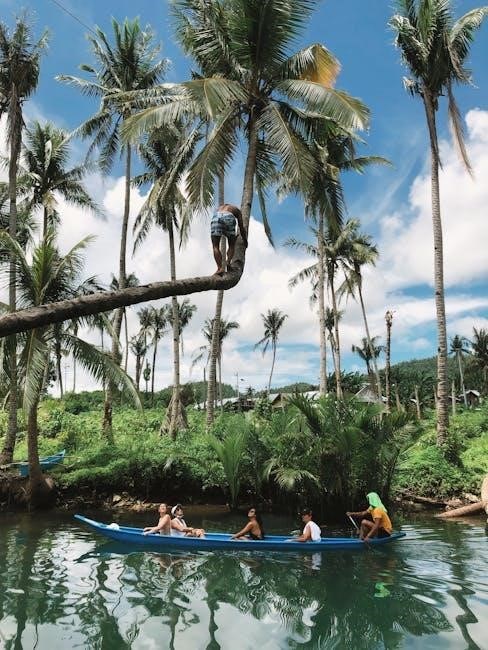
Where Will You Use Your Kayak?
Determine if you’ll paddle on freshwater or saltwater, calm lakes, or whitewater rapids. Consider recreational, touring, or fishing purposes to choose the right kayak for your adventures.
2.1 Freshwater vs. Saltwater Kayaking
Freshwater kayaking on lakes or rivers offers serene environments, ideal for beginners and recreational use. Saltwater kayaking in oceans or coastal areas provides access to diverse marine life but requires kayaks designed for open water conditions, such as sea kayaks or those with rudders for better tracking and stability in currents.
2.2 Calm Waters vs. Whitewater Conditions
Calm waters, such as lakes or slow-moving rivers, suit recreational kayaks with stability for relaxed paddling. Whitewater conditions require specialized kayaks designed for agility, durability, and maneuverability, ensuring safety in turbulent environments with strong currents and rough waves.
2.3 Recreational, Touring, or Fishing Kayaks
Recreational kayaks are perfect for calm waters, offering stability and ease for casual use. Touring kayaks are built for long-distance efficiency, with features like storage hatches. Fishing kayaks are designed for anglers, equipped with rod holders and platforms for gear, enhancing the fishing experience on the water.
Types of Kayaks
Kayaks vary widely, catering to different activities and preferences. From recreational and touring models to fishing and inflatable designs, each type offers unique features suited for specific paddling experiences and environments.
3.1 Sit-On-Top Kayaks
Sit-on-top kayaks are ideal for beginners, offering excellent stability and ease of use. Their open design makes them perfect for calm waters, recreational paddling, and fishing. They are also easy to mount and dismount, providing a comfortable and accessible experience for paddlers of all skill levels.
3.2 Sit-Inside Kayaks
Sit-inside kayaks offer better protection from the elements with their enclosed cockpits. They are ideal for colder climates and longer trips, providing improved efficiency and tracking. These kayaks are popular among experienced paddlers seeking performance and control in various water conditions.
3.3 Inflatable Kayaks
Inflatable kayaks are lightweight, portable, and easy to store. They are perfect for calm waters, offering durability and versatility. Ideal for beginners or those with limited space, inflatables provide a convenient and affordable option for casual paddling adventures.
3.4 Recreational vs. Touring Kayaks
Recreational kayaks are designed for calm waters, offering stability and comfort for short trips. Touring kayaks are built for speed and efficiency over long distances, with features like storage hatches for extended adventures. Choose based on your paddling style and the duration of your excursions.
3.5 Fishing Kayaks
Fishing kayaks are specialized for anglers, offering stability and space for gear. They often feature rod holders, storage compartments, and platforms for standing. Designed for calm or moving waters, these kayaks prioritize functionality, allowing anglers to focus on their catch while staying comfortable and organized during long fishing sessions.
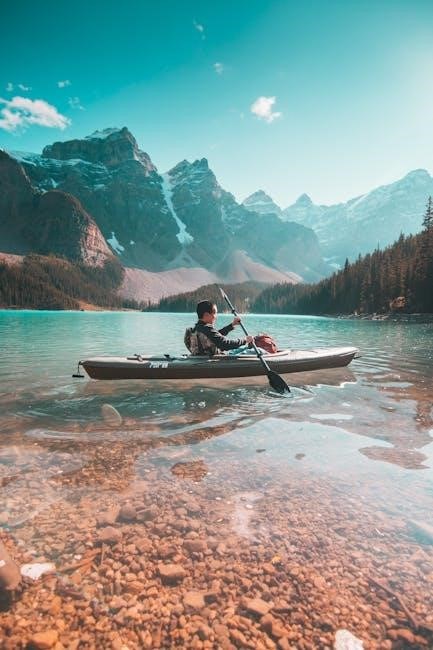
Factors to Consider When Buying a Kayak
When selecting a kayak, prioritize stability, comfort, and durability. Consider the kayak’s length, weight capacity, and maneuverability. Ensure it fits your paddling style, whether for calm waters, touring, or fishing, and suits your budget and storage needs.
4.1 Stability and Comfort
Stability and comfort are crucial for an enjoyable kayaking experience. A wider hull enhances stability, while a well-designed cockpit and ergonomic seating reduce fatigue. Ensure the kayak fits your body, with adjustable footrests and a supportive backrest for optimal paddling comfort and control during long trips on various waters.
4.2 Length and Weight Capacity
Kayak length impacts speed and tracking, with longer models offering better efficiency. Weight capacity determines the kayak’s performance under load. Choose a kayak that meets your weight needs and activity style, ensuring optimal buoyancy and maneuverability for a safe and enjoyable paddling experience on any water condition.
4.3 Maneuverability and Speed
Kayak length and design significantly impact maneuverability and speed. Shorter kayaks excel in agility, perfect for tight spaces and whitewater, while longer models offer better tracking and efficiency, ideal for touring or covering long distances efficiently on calm waters.
Materials and Construction
Kayak materials vary, with options like durable polyethylene for affordability, lightweight fiberglass for performance, and inflatable designs for portability. Each material offers unique benefits, impacting durability, weight, and cost.
5.1 Fiberglass vs. Polyethylene
Fiberglass kayaks are lightweight, durable, and offer excellent performance, making them ideal for touring. Polyethylene kayaks are more affordable, impact-resistant, and suitable for recreational use. Choosing between them depends on your budget, paddling style, and the level of performance you desire.
5.2 Wooden Kayaks
Wooden kayaks offer a timeless aesthetic and can be eco-friendly, with some built from sustainable materials. They often require more maintenance than fiberglass or polyethylene but are prized for their craftsmanship and unique appeal, making them a niche choice for enthusiasts seeking traditional or custom designs.
5.3 Inflatable Materials
Inflatable kayaks are made from durable materials like PVC or rubber, offering lightweight portability and ease of storage. These kayaks are ideal for casual use and transport, providing a practical solution for paddlers seeking versatility and convenience without compromising on performance or safety.
5.4 Composite Materials
Composite materials, such as fiberglass and carbon fiber, are used to create high-performance kayaks. These durable, lightweight hulls offer excellent maneuverability and speed, making them ideal for experienced paddlers seeking a balance of efficiency and reliability in various water conditions.

Budget and Price Range
Setting a budget is crucial when buying a kayak. Prices vary widely based on materials, features, and quality, ranging from affordable entry-level models to premium options. Research options within your price range to find the best value for your needs without compromising on essential features.
6.1 Entry-Level Kayaks
Entry-level kayaks are ideal for beginners, offering excellent value and basic features. These models are typically more affordable, with prices starting around a few hundred dollars, making them accessible for those new to kayaking. They often focus on stability and ease of use, ensuring a comfortable experience for first-time paddlers.
6.2 Mid-Range Kayaks
Mid-range kayaks, priced between $600 and $1,200, offer a balance of performance and affordability. They feature improved durability, better seating, and storage options, making them a great choice for paddlers seeking quality without the premium price tag.
6.3 Premium Kayaks
Premium kayaks, priced over $1,200, offer exceptional performance, durability, and advanced features. Crafted from high-end materials, they provide superior speed, maneuverability, and comfort, ideal for experienced paddlers seeking long-term reliability and a refined paddling experience.
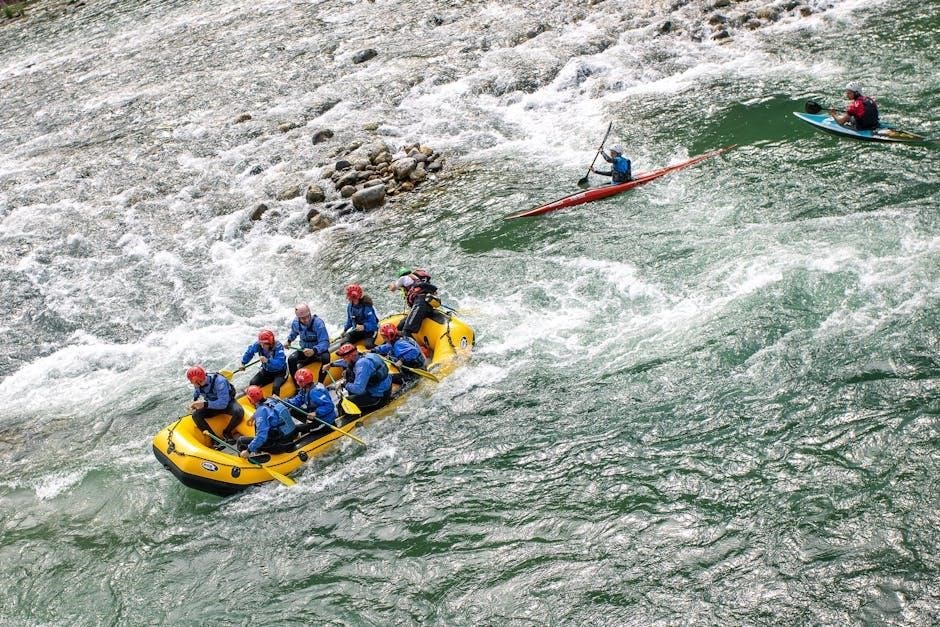
Additional Features to Look For
Enhance your kayaking experience by considering features like storage hatches, comfortable seating, and a rudder or skeg for improved maneuverability and efficiency on the water.
7.1 Rudder or Skeg
A rudder or skeg improves directional control, reducing effort needed to stay on course. Rudders are adjustable, aiding in windy or currents, while a skeg enhances tracking. Both features are especially beneficial for long-distance paddling or open water conditions, ensuring better efficiency and stability during your adventures.
7.2 Storage Space and Hatches
Adequate storage space and hatches are essential for carrying gear. Look for compartments with easy access to keep essentials dry and within reach. Ample storage is crucial for touring or fishing, ensuring your belongings remain secure and organized during your paddling adventures.
7.3 Comfortable Seating
Comfortable seating is vital for enjoyable paddling. Look for kayaks with ergonomic, cushioned seats and adjustable backrests. Proper fit reduces fatigue, ensuring a pleasant experience during extended trips. Prioritizing seat comfort enhances overall paddling efficiency and satisfaction, making long excursions more manageable and enjoyable for all skill levels.
Maintenance and Upkeep
Regular maintenance ensures longevity and performance. Clean your kayak after use, store it properly, and address repairs promptly to prevent damage. A well-maintained kayak enhances safety and durability, providing years of reliable service for all your paddling adventures.
8.1 Cleaning and Storage Tips
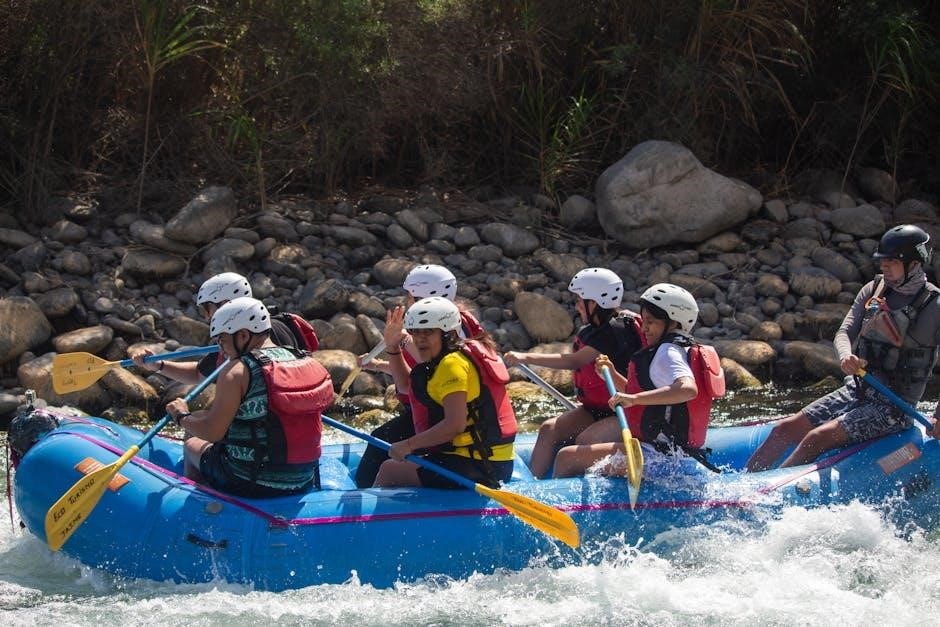
Regularly rinse your kayak with fresh water to remove dirt and salt residue. Use mild soap and avoid harsh chemicals. Store in a cool, dry place, protected from direct sunlight. Consider using a kayak cover to prevent damage and extend lifespan. Proper care ensures optimal performance and durability over time.
8.2 Transporting Your Kayak
Use a roof rack with padding to protect your kayak during transport. Secure it tightly with straps, ensuring even weight distribution. Regularly check the kayak’s position and tightness of straps during long trips to prevent damage or shifting. Safe transport ensures your kayak arrives in perfect condition for your next adventure.
8.3 Repairing Damages
Assess damage thoroughly, using patches for inflatables or epoxy for hardshells. Clean the area before repairs and follow manufacturer guidelines. For extensive damage, consult a professional. Regular inspections help prevent minor issues from becoming major repairs, ensuring your kayak remains in great condition for future adventures.
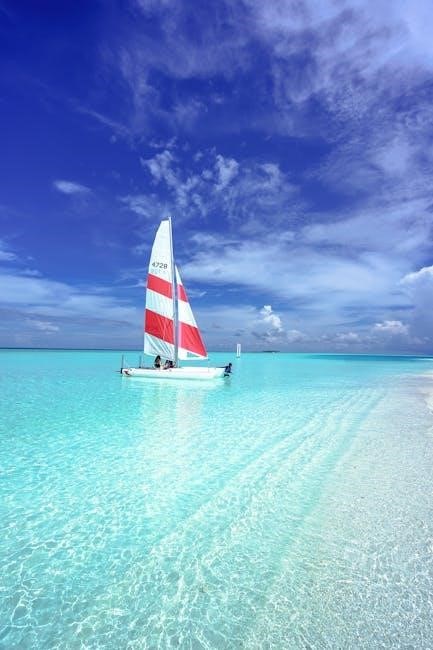
Recommendations by Activity Type
This section helps you match kayak types to your activities, ensuring the best fit for touring, fishing, or recreational use, with options like the Wilderness Systems Pungo 120 or inflatable models for portability.
9.1 Best Kayaks for Beginners
Beginners should prioritize stability and ease of use. Sit-on-top and recreational kayaks are ideal, offering great balance and comfort. The Pelican Argo 100X EXO is a budget-friendly option, while the Wilderness Systems Pungo 120 provides excellent maneuverability and a spacious cockpit for easy entry and exit, ensuring a enjoyable paddling experience for new kayakers.
9.2 Best Kayaks for Fishing
Fishing kayaks require stability, storage, and durability. Models like the Wilderness Systems Pungo 120 and Pelican Argo 100X EXO are excellent choices, offering ample space for gear and built-in features that enhance fishing experiences, ensuring anglers can focus on their catch while staying comfortable and maneuverable on the water.
9.3 Best Kayaks for Touring
For long-distance paddling, touring kayaks like the Wilderness Systems Tsunami 145 offer excellent speed, tracking, and storage capacity. Their streamlined designs ensure efficiency, while lightweight materials enhance portability, making them ideal for exploring coastlines, rivers, and lakes on extended adventures with ease and comfort.
9.4 Best Kayaks for Recreational Use
Recreational kayaks, such as sit-on-top or inflatable models, are perfect for casual paddling on calm waters. They offer stability, ease of use, and comfort, making them ideal for families or beginners. These kayaks are versatile for lakes, slow rivers, or coastal areas, ensuring a fun and relaxing experience.
Final Tips for Buying Your Kayak
Test paddle before purchasing, consult experts, and read reviews to ensure the best fit. Prioritize comfort, stability, and durability, and don’t hesitate to seek advice for a confident decision.
10.1 Trying Before Buying
Testing a kayak in real conditions is crucial. It allows you to assess stability, comfort, and maneuverability firsthand. Many retailers offer demo days or rentals, enabling you to experience different models before committing to a purchase, ensuring the best fit for your paddling style and needs.
10.2 Consulting with Experts
Seeking advice from experienced paddlers or kayak specialists can provide valuable insights. Experts can offer personalized recommendations, help you avoid common mistakes, and ensure you find a kayak that matches your needs, enhancing your overall paddling experience and satisfaction with your purchase.
10.3 Reading Reviews and Comparisons
Reading reviews and comparisons helps you understand a kayak’s performance, durability, and value. Real user feedback highlights pros, cons, and specific features, enabling informed decisions. Comparisons also reveal how different models stack up, ensuring you select the best kayak for your paddling style and preferences. Research is key to satisfaction.